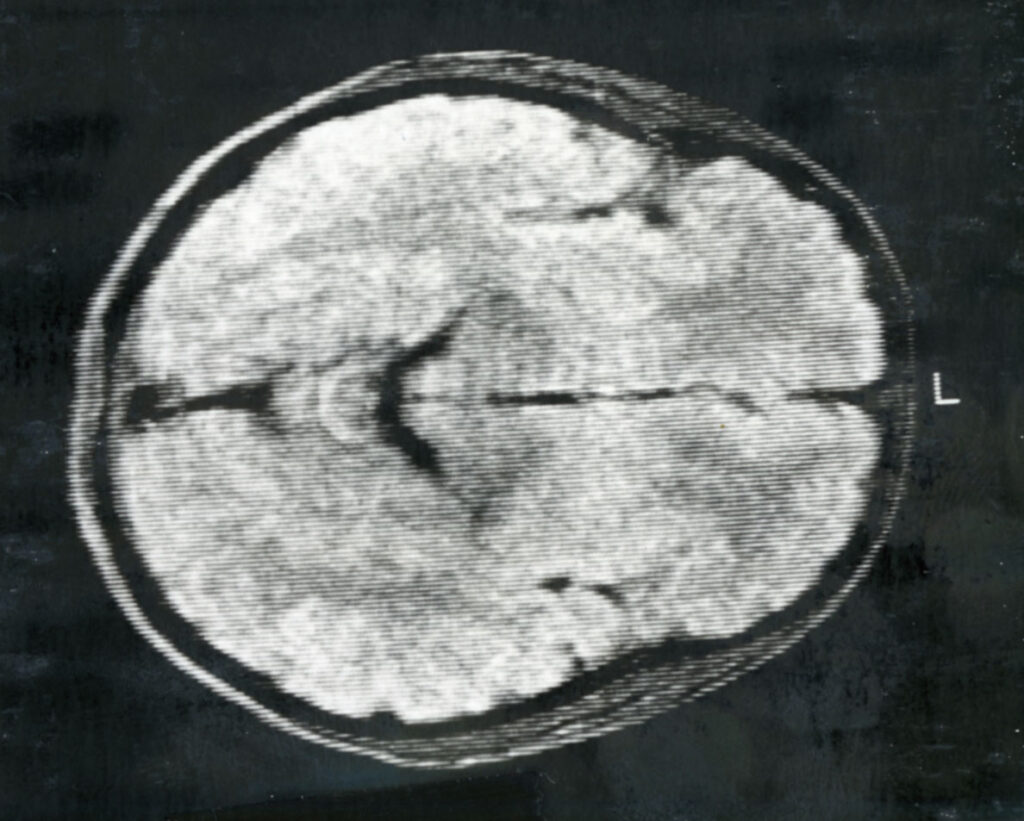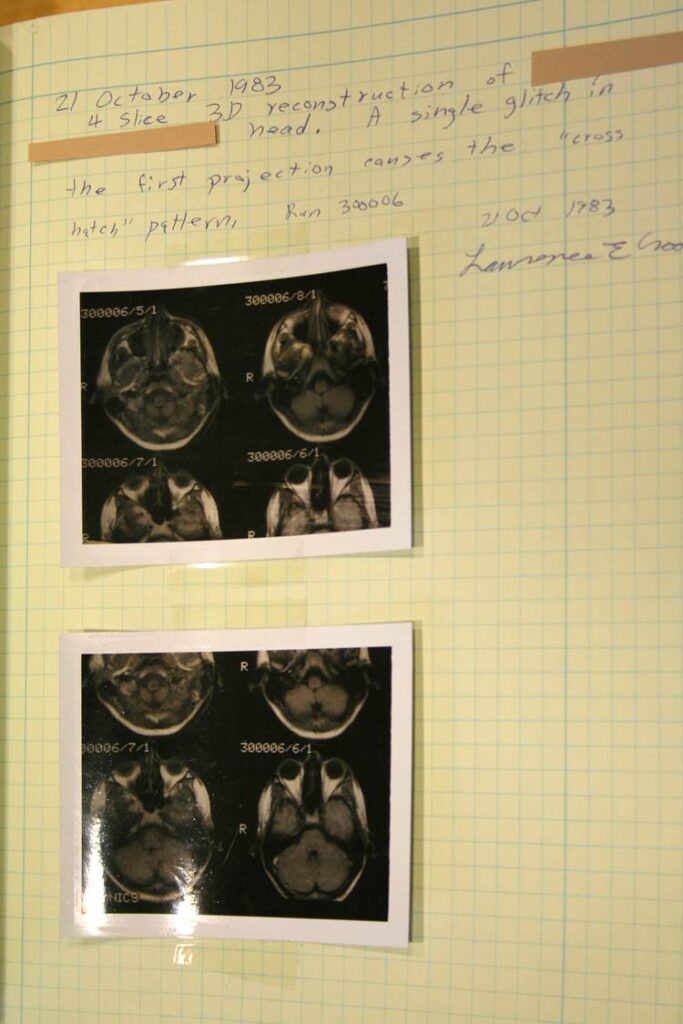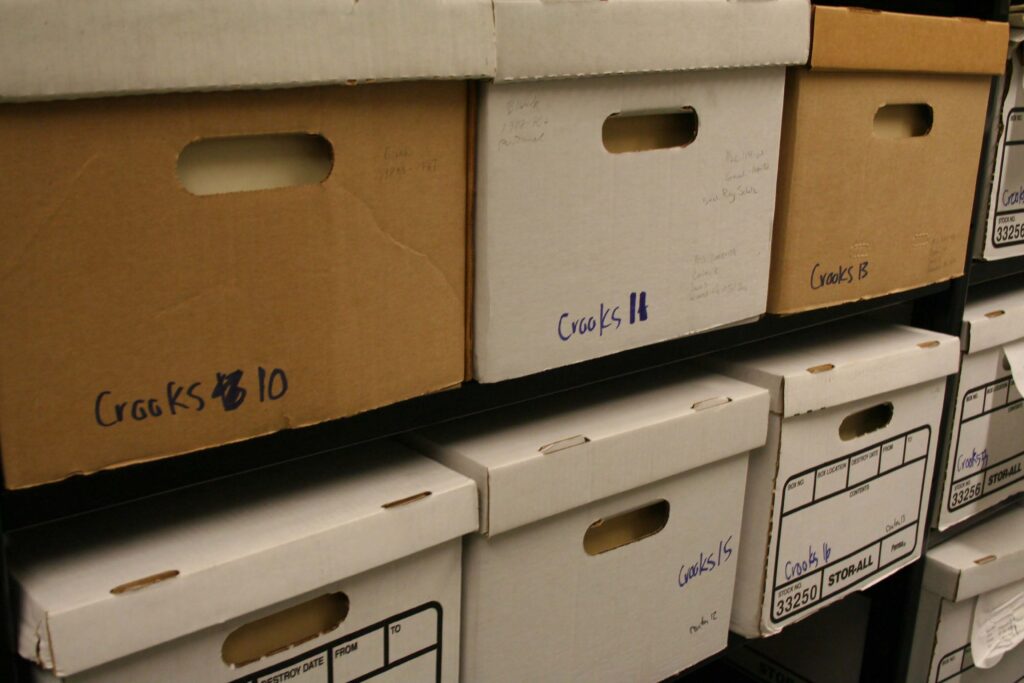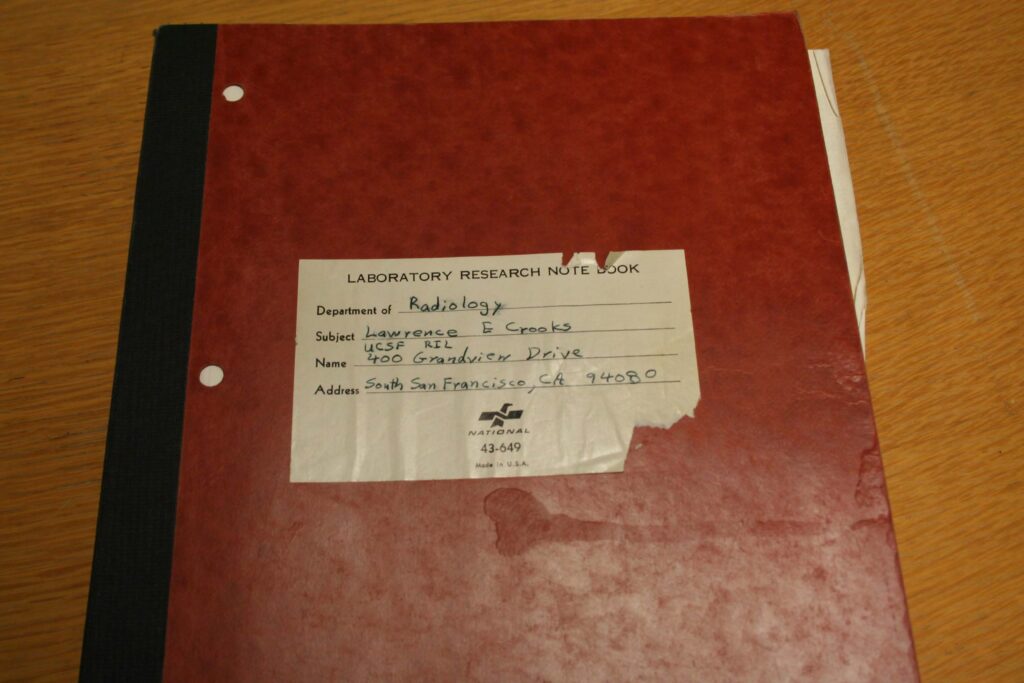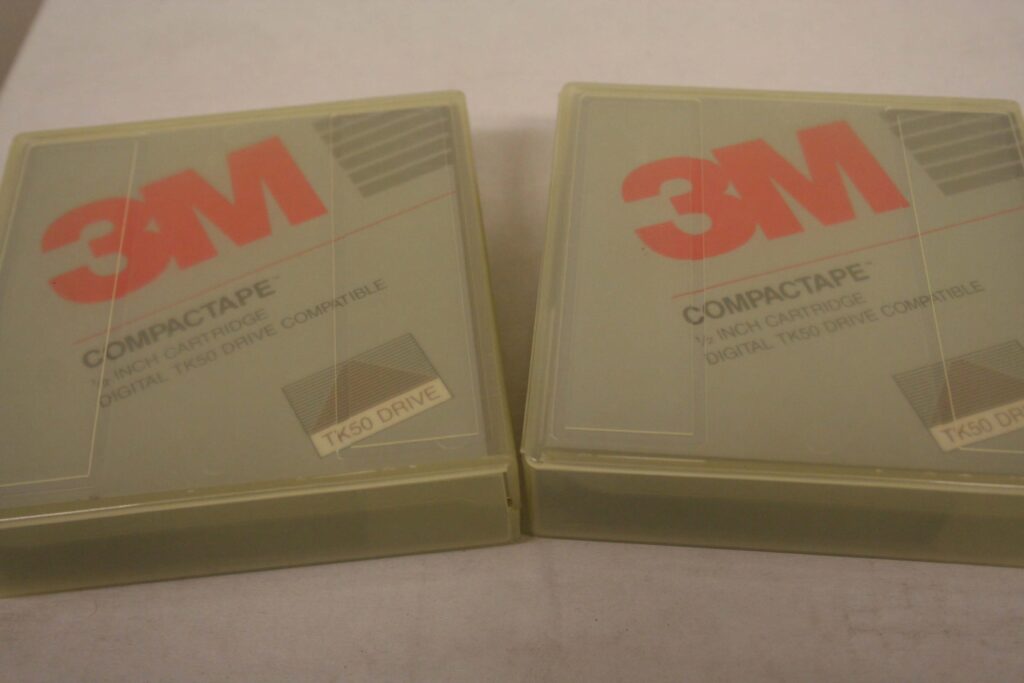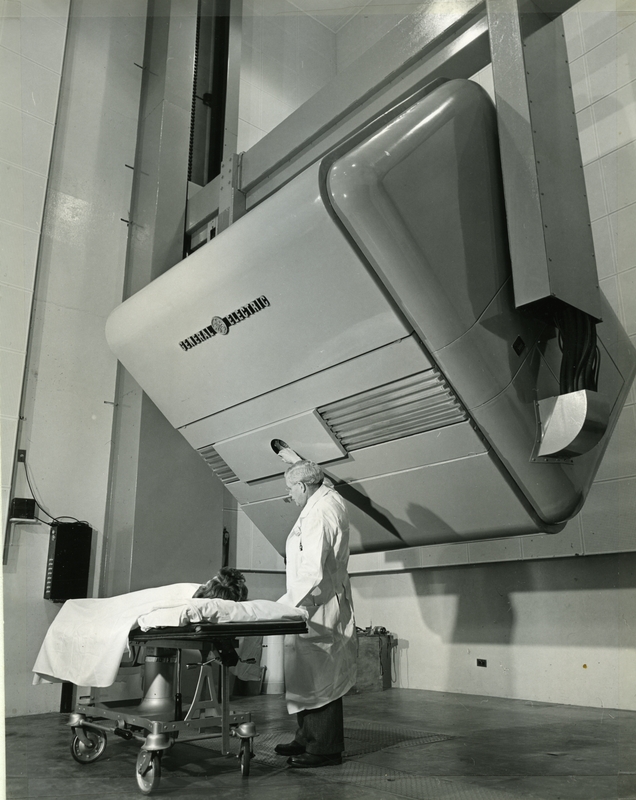Our extensive Historical Photograph Collection includes some really fascinating images. Check out these from the UCSF Radiology Department.
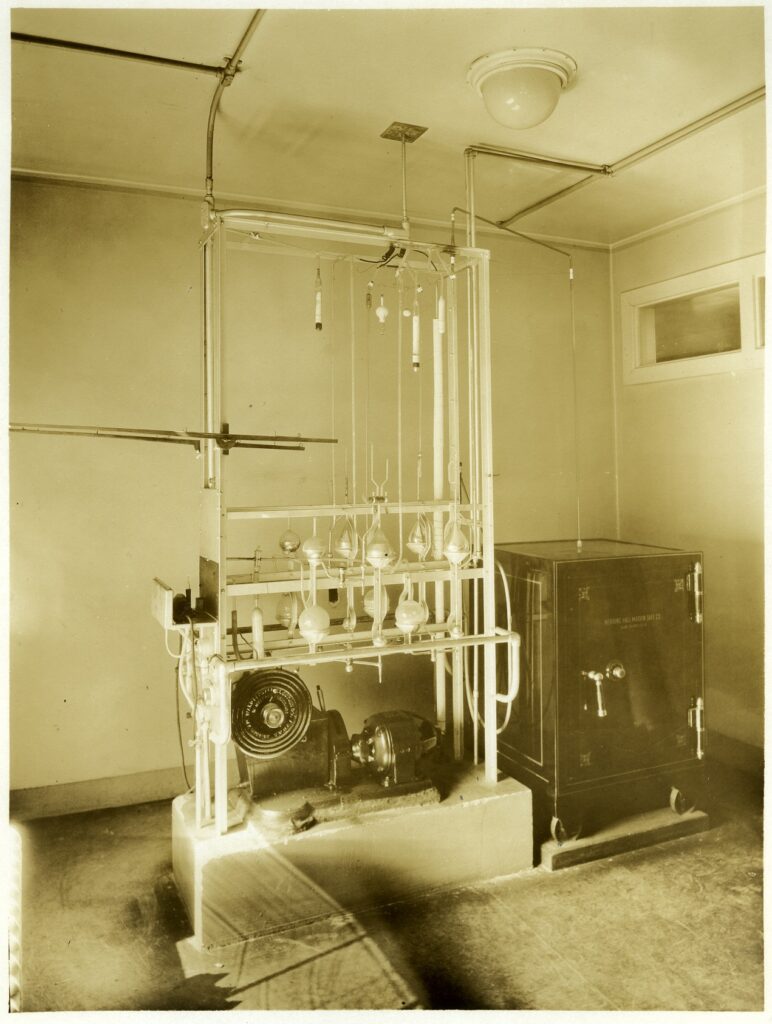
Verso: “Interior of University of California Hospital; Equipment used for the extraction of radon – an element formed by the disintegration of radium,” 1924. Photograph by H.J. Armstrong. Photograph collection, SM, Department of Radiology.
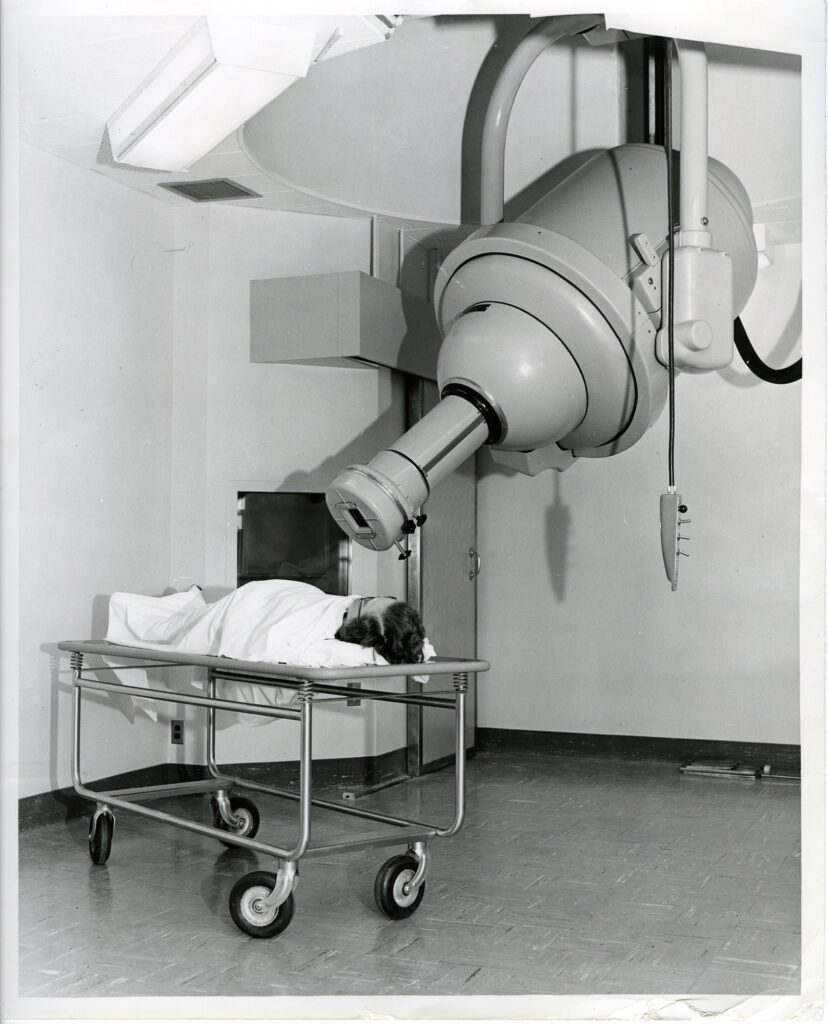
Cobalt machine, 1963. Instrument used to administer radiation therapy, often used for cancer treatment. Photograph by Cal-Pictures. Photograph collection, R, Radiology Therapy.
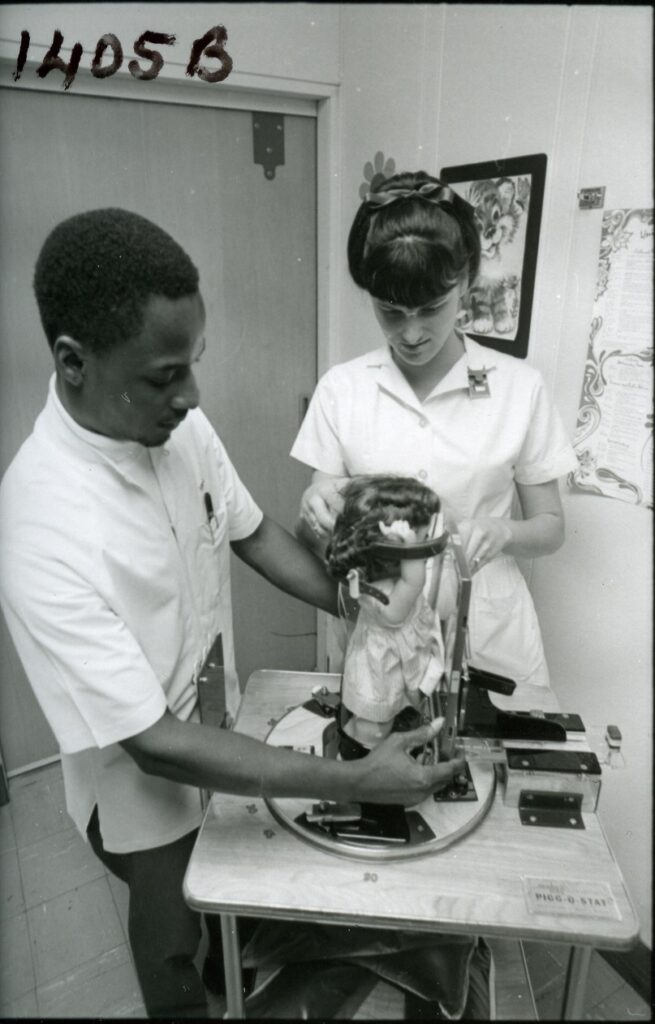
Students Debbie Modeiros and Nat Rutherford, in the Radiologic Technology Training School, practicing with doll, 1969. Photograph collection, R, Radiology Technology School.
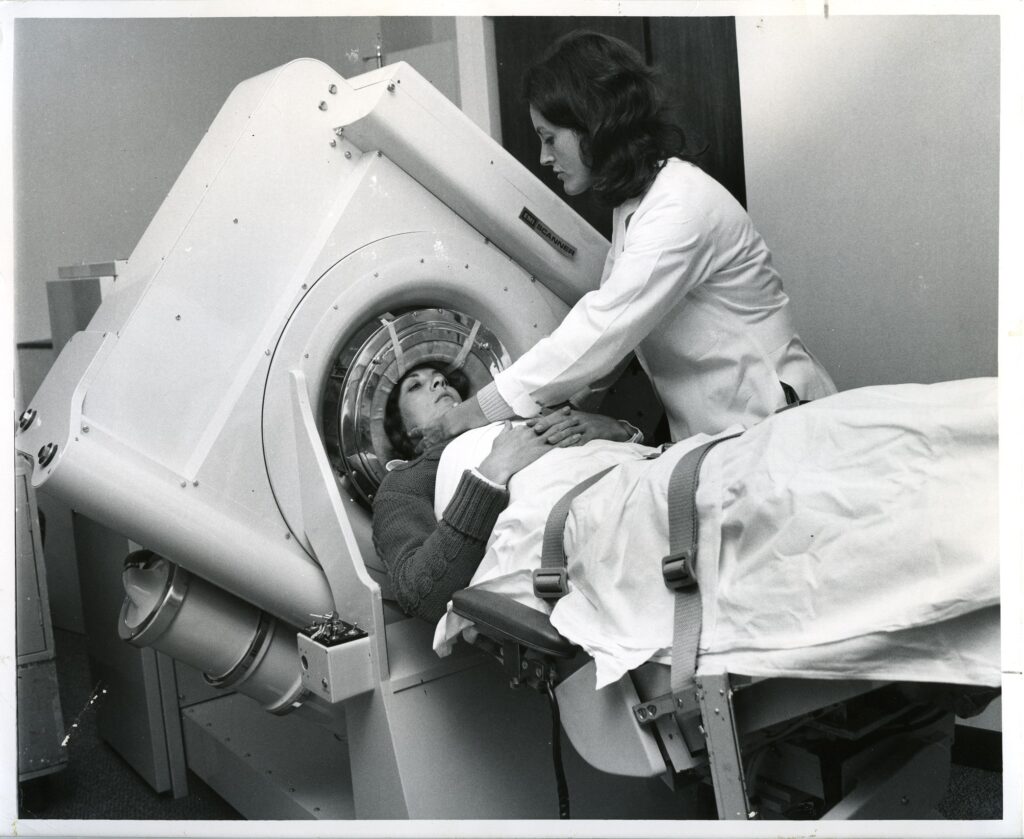
EMI Scanner, 1975. Verso: “The EMI scanner is an example of recent technological advances that reduces patient X-ray exposure while providing more accurate diagnosis than obtainable with older X-ray machines. Here technician Mary McNally and secretary Penny Foster, as patient, demonstrate the giant 2 1/2 ton machine which diagnoses brain disorders.” Photograph by Juan Saenz. Photograph collection, R, Radiology CT and EMI scanning.

